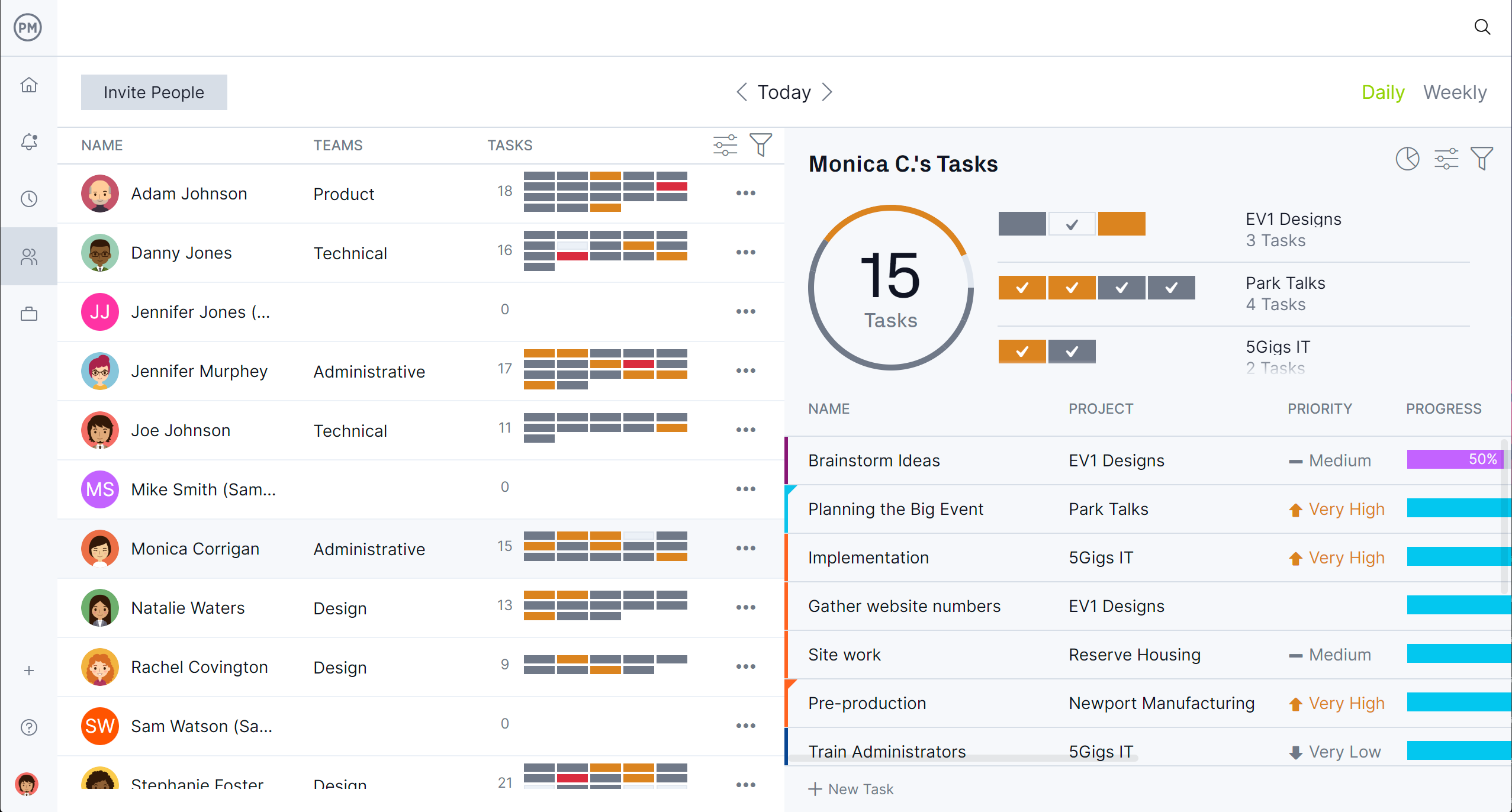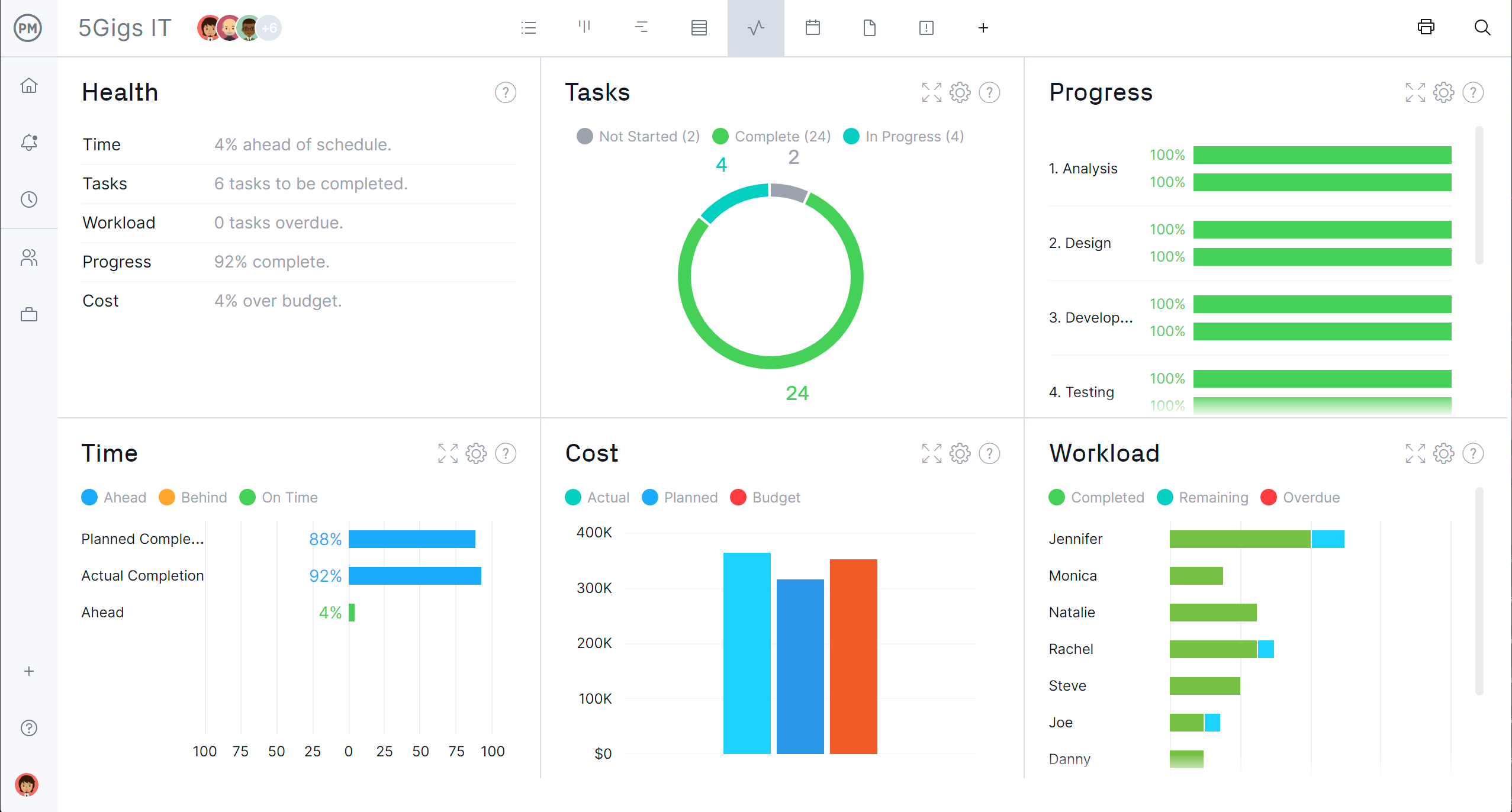Some projects are done internally within an organization. They don’t directly deliver new products or services to customers, but improve the way an organization does business and that impacts customers. This is called operational project management.
To better understand operational project management requires defining what an operational project is, how it differs from strategic projects and what operational project management is. There will also be a section describing best practices and an operational project example to further illustrate the idea.
What Is an Operational Project?
There are three types of projects, broadly speaking, strategic, compliance and operational. Operational projects are those that are employed to improve the current operations at a business or organization. The goals of an operational project are to reduce costs, get work done more efficiently or produce a higher-quality product.
Therefore, these are internal projects that aren’t designed to directly impact an audience or customer base. However, because they’re concerned with streamlining department workflows, implementing new technology or processes or even updating the company’s offerings, customers will eventually see the benefits of these improvements. No matter what the type of project is, project management software helps deliver it more efficiently.
ProjectManager is award-winning project and portfolio management software that has multiple project views to implement operational projects across all departments. Managers can plan on robust Gantt charts that link dependencies, filter for the critical path and set a baseline to track variance in real time. Each department can then use the project view that’s most appropriate for their work, whether that’s task lists, kanban boards, spreadsheets or calendars. All project views update simultaneously, so everyone is always working on the same page. Get started with ProjectManager today for free.
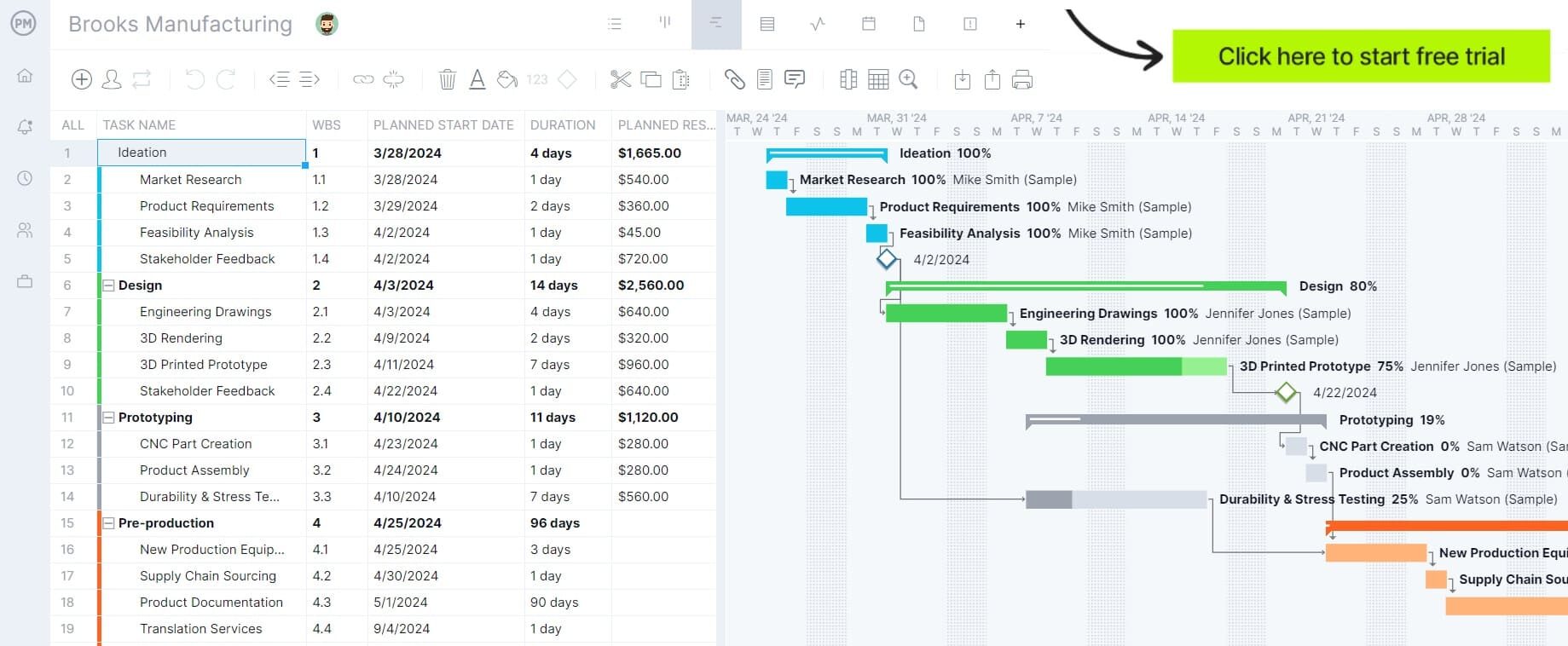
What Is the Difference Between Strategic and Operational Projects?
As noted above, strategic and operational projects are two of the three types of broad project categories. In simplest terms, the two differ in that an operational project has the goal of improving the day-to-day operations of a business. Therefore, any project that has the objective of improving efficiency, decreasing costs or improving productivity in the short term is operational.
A strategic project is about creating something new and innovative. This could be anything from a new product, a new service, a new retail location, a new branch or division, or even a new factory. That’s because all these types of projects will give the business a strategic advantage over its competition. Another way to look at it is that the strategic plan outlines the business vision, mission and high-level goals, usually for the next three to five years.
To put the difference between a strategic project and an operational project, the former shares a vision for the future and the latter plans out how you’ll get there on a daily, weekly or regular basis. Both strategic projects and operational projects are concerned with the future of the business, but they look at that from different angles.
What Is Operational Project Management?
Operational project management deals with the planning, organizing, monitoring and controlling of resources to achieve project objectives. Its objective is to improve the day-to-day business operations which requires strong leadership and communication skills.
Project Management vs. Operations Management
Project management and operations management are the two halves that make up operational project management. That doesn’t mean they’re the same. They have points in common and others where they differ.
The difference between project management and operations management is their focus. Each has a different objective. Operations management is working on running the day-to-day business as efficiently as possible. Project management oversees projects from start to finish. They also differ in that operations management is continuous, while project management is temporary, moving from one project to another.
However, these two roles are closely related and work together from different perspectives. Projects are often closely tied to ongoing operations and must be managed to ensure success. There are also similarities between project management and operations management. Both seek greater efficiency and improved performance. Both rely on effective planning, execution and monitoring, and both require strong leadership and clear communication.
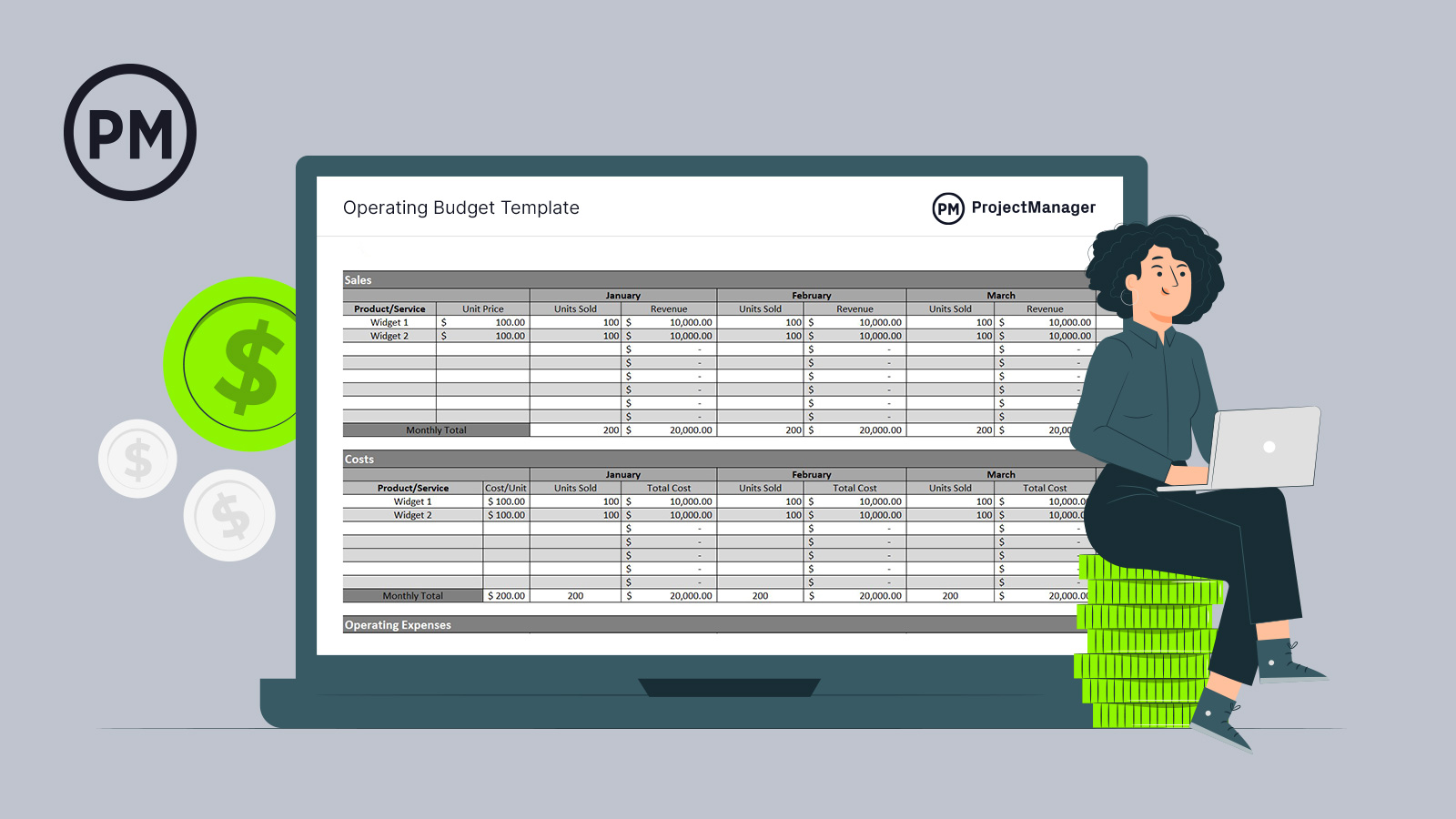
Get your free
Operating Budget Template
Use this free Operating Budget Template for Excel to manage your projects better.
Operational Project Example
To further clarify what operational project management is, let’s look at some examples of operational projects. First, it’s important to understand the key characteristics of operational projects. They involve continuous improvement, are executed on an ongoing or frequent basis, tend to be less risky, require consistent resources and get input from the bottom up in that employees at all levels of the organization will be involved.
Now, let’s look at what an operational project would be. There are many examples of operational projects, such as implementing a new inventory management system, optimizing the supply chain logistics of the organization, streamlining customer service processes or upgrading IT infrastructure. All of these are internal projects that will positively impact the organization’s day-to-day operations.
Who Is Responsible for Managing Operational Projects?
There are many people involved in the execution of an operational project, just as there are with any project. And, just as in any project, there’s someone at the top responsible for planning and monitoring the project to ensure it’s delivered on time and within budget. For operational projects, there are two such positions.
Operations Project Managers
This is a professional tasked with ensuring the business is running smoothly. They’ll work towards achieving greater efficiency. Part of their responsibilities include overseeing the various departments in the company so that they can better collaborate to achieve shared business goals.
Project Management Office (PMOs)
A project management office is an internal or external department in an organization responsible for establishing and maintaining project management standards, processes and best practices. They’re tasked to execute every project as efficiently as possible, including operational projects. PMOs seek primal utilization of resources, help businesses achieve strategic objectives and protect them against market volatility.
Operational Project Management Best Practices
The challenges of managing an operational project are similar to managing any type of project, yet there are unique hurdles that must be cleared. Below are some of the best practices that should be considered when managing an operational project.
Facilitate Cross-Departmental Collaboration
Because operational projects are executed internally within the organization they often require the coordination of many different departments. Being able to have these different departments collaborate effectively is key to the operational project’s success. The operations manager must be able to get engineers, designers, marketers and customer support all working together to achieve their common goals.
Conduct a Cost Benefit Analysis
Before an operational project is executed it must first be reviewed to determine if it’s worth the investment. Using a cost-benefit analysis is a tool that can determine whether the effort and costs are worth the expected return on investment. This is done by adding up the benefits to the business and comparing them to the associated costs. If the benefits outweigh the costs, then the operational project can be initiated.
Create a Project Review Document for Future Reference
A project review document is used to evaluate an operational project that’s currently being executed. It’s often used when there’s a problem, such as delays or other issues that are negatively impacting the project. This is a way to look at the project from a distance instead of being in the weeds, which is the usual perspective of an operational manager so that they can better identify and resolve problems. These project review documents should be archived and retrieved for future reference when similar projects are experiencing problems.
Use Project Management Software
Project management software is a valuable tool for managing operational projects. It has features such as Gantt charts to organize tasks, create schedules and assign tasks to team members. Project management software with multiple project views is ideal for cross-functional teams as it allows everyone to use the tools that are most appropriate for their work while all these views are updated together to ensure everyone is working on the same page. Project management tools also have other valuable features, such as dashboards to monitor project, resource and task management tools.
Operating Budget Template
This free operating budget template for Excel allows you to estimate the income that your organization will receive from sales and its operational costs for a year, so you can make an accurate and realistic operating budget.
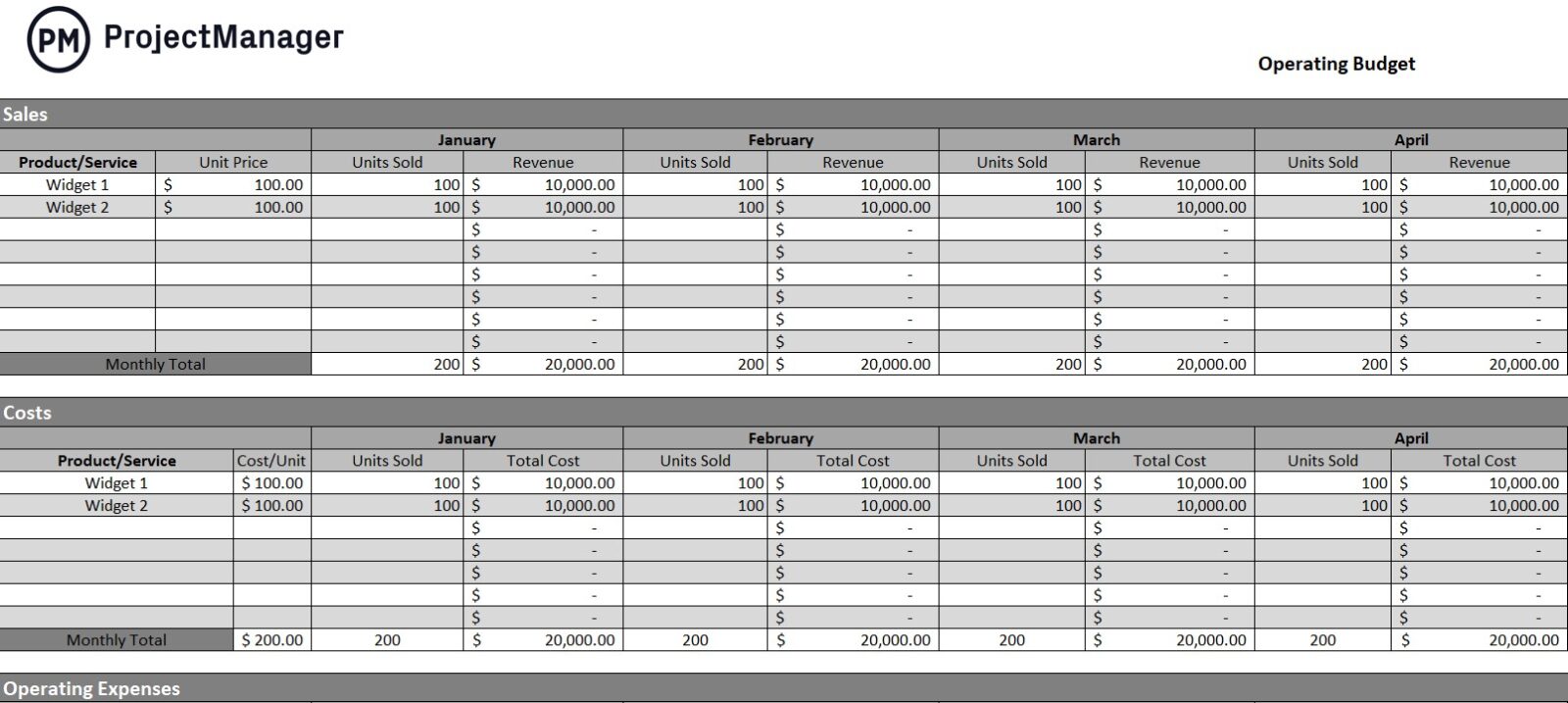
Operational Project Management Templates
While project management software is the best bet to manage projects, some aren’t ready to upgrade and will use spreadsheets to manage projects. That’s not advisable, but there are free project management templates for Excel and Word that can help operational managers create budgets, timelines and dashboards.
Project Budget Template
Every project has a budget, which is the costs associated with executing it. To ensure the project is properly funded, use this free project budget template for Excel. It helps accurately forecast labor, material and other costs.
Project Timeline Template
Projects also need to schedule tasks to have the final deliverable produced on time. This free project timeline template for Excel helps to meet deadlines by listing all tasks, their start and end times and then automatically populating that data on a visual timeline to view the entire project in one place.
Project Dashboard Template
Once the project is in the execution phase, the operational manager will monitor its progress and performance to ensure it’s aligned with the project plan. This can be accomplished by using the free project dashboard template for Excel. It captures key performance indicators (KPIs), such as workload, cost and more.
ProjectManager Helps Manage Operational Projects
Templates are great until they’re not. A project budget template can’t track costs. A timeline can’t link dependencies. A project dashboard needs to be manually updated. There’s a workaround, though, and that’s project management software. ProjectManager is award-winning project and portfolio management software that has multiple project views for cross-functional teams, Gantt charts that do more than mere timelines can, real-time dashboards and resource management features to keep teams working at capacity.
Manage Resources Across Project Portfolios
Both human and nonhuman resources can be scheduled on Gantt charts, including their costs, and tracked throughout the project. Teams are the most valuable resource and when they’re onboarded, set their availability, including vacation, PTO and global holidays, which makes it easier to assign them tasks. Go to the team page or color-coded workload chart to see who is overallocated on a project or multiple projects and balance the team’s workload to keep them productive.

Create Budgets and Monitor Project Costs
Budgets can be set when creating a project in the software and then costs are tracked as the project is executed. These costs and other project metrics can be monitored by toggling to the real-time project or portfolio dashboard. The dashboard is constantly updated with live data and displays it in easy-to-read graphs and charts that show time, costs, workload and more. For more in-depth data, use the customizable reports that can generate status, portfolio, variance, timesheets and more reports in a keystroke. Each can be filtered and shared with stakeholders.
 Related Operational Project Management Content
Related Operational Project Management Content
There’s still a lot more to learn about operational project management. Below are links to other pieces published on this site, including on operational planning, efficiency and excellence. Follow the links below.
- Operational Planning: How to Make an Operations Plan
- Operational Efficiency: A Quick Guide
- Operational Excellence: Principles & Methodologies
ProjectManager is online project and portfolio management software that connects teams whether they’re in the office or out in the field. They can share files, comment at the task level and stay up to date with email and in-app notifications. Join the teams at Avis, Nestle and Siemens who are using our software to deliver successful projects. Get started with ProjectManager today for free.

